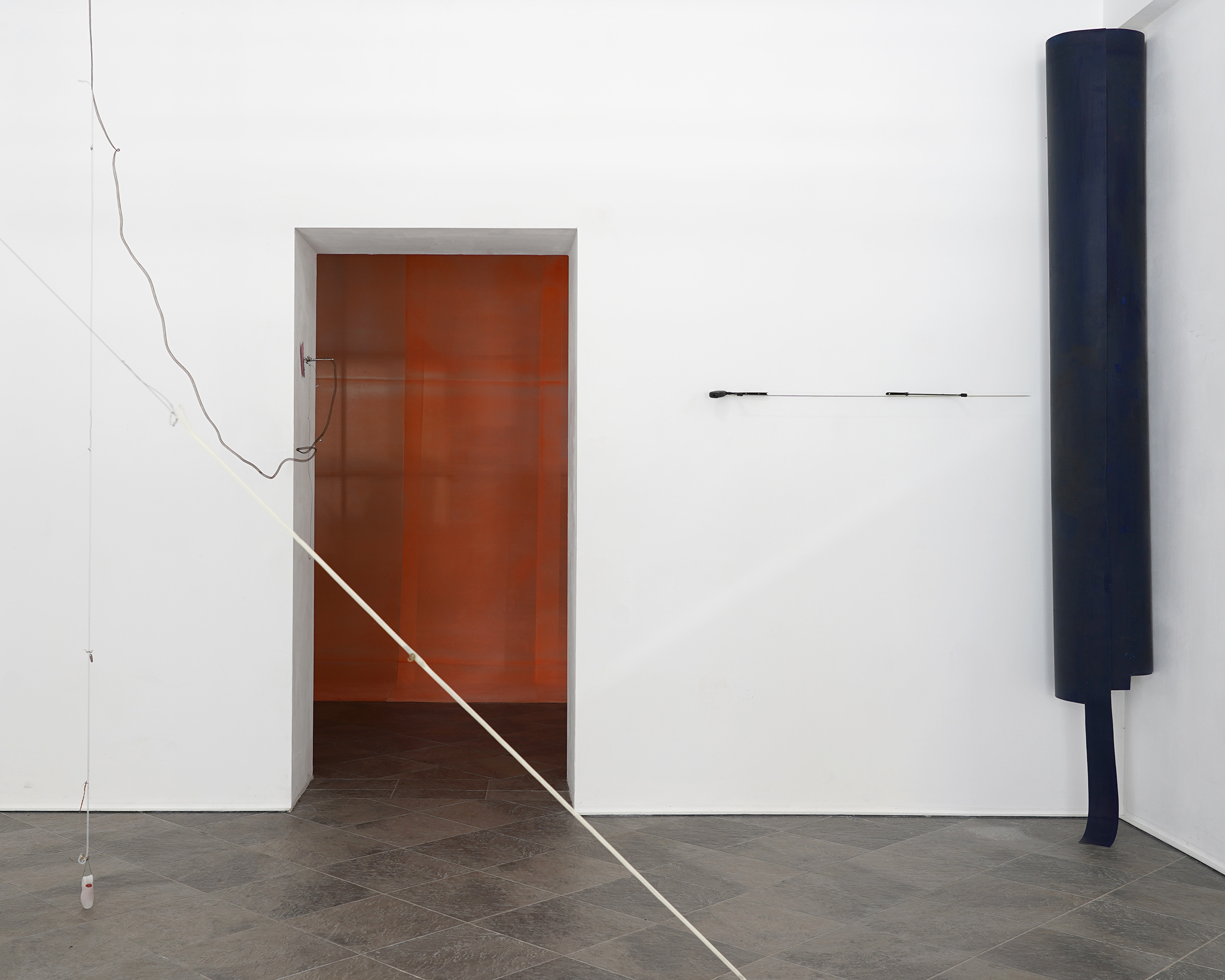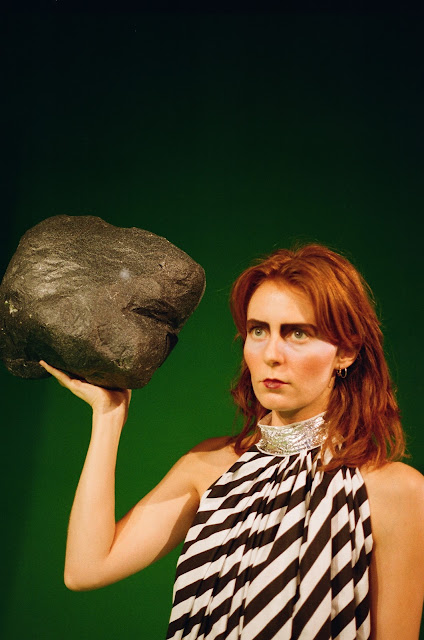4 figures in a landscape full of marginal notes and statements, 2020
4 figures in a landscape full of marginal notes and statements, 2022
Installation
app. 4x4x5
[Abb. 6] Pan Detail
[Abb. 7] Figure with child, 2019
ceramic, nail Polish
35x25x20
[Abb. 8] Figure with child Detail
[Abb. 9] Artemis, 2015
ceramic
20x15x7
wax, foam, wood
[Abb. 12] Vase, 2017
Ceramic
60x45
[Abb. 13] Vase Detail, 2017
[Abb. 14] Detail of Installation
[Abb. 14] Detail of Installation
[Abb. 16] Detail of Installation
[Abb. 17] Drop, 2020
wax, paper, cooper
10x5x8
The setting consists of two blue felt surfaces, a leather carpet with burn paintings and steel rods, which serve as plateaus for two seated figures. Two further figures: a small antique sculpture and Daphnis, the counterpart to Pan sitting high above, are integrated into the arrangement in a standing position. Further part of the ensemble are a vase with a nipple lid, a standing wooden object [fig. 2] with an orange surface, a Doric ruin [fig. 11] and a wax drop [fig. 16], which accompany the ceramic figures as visual props.
The installation negotiates functions and themes of sculpture in the conventional sense, from its service of cultic purposes to its attempt to represent an image of man and thus as a classical functionary of identity assertion, which in this setting also makes use of contemporary indicia. Cult images are taken up here and their traditional modes of representation applied, as for example in the depiction of the Mother of God [Figs. 7 & 8].
In this way, all the figures were shaped and formed into hybrid representatives through natural-historical, pop-cultural and personal references.
This is also the case with the figure couple "Daphnis and Pan" [fig. 3-6], which creates the plastic snapshot of a mythological narrative into which both figures are integrated.
A staging of that scene in which Daphnis sits on a large rock and is about to throw himself down, while Pan plays the flute. Despite the attempt to dispel Daphnis' grief through artistic sublimation, his heartbreak cannot be alleviated. At least not as with the amorous Pan, who was first led to the pan flute by his sexual desire (Rape on Syrinx).
Staged as homoerotic, bisexual and younger "dandies", these two are in the tradition of the first free-standing sculpture, Donatello's "David". However, each with an extended middle finger and erect penis. Their sovereignty is shown, as in the case of the maternal icon, through the appropriation and deformation of their sexuality and the ideas that accompany it.
Less binary, the wounded antique-small sculpture [fig. 9] enters the scene slowly, while being pursued by the oversized Doric ruin [fig. 11].
The small sculpture is an imitation of the tonidol from Boeotia of the Late Geometric period around 740 - 700 BC, in a similar moulding a classical addition for the tombs of women and children, whose paintings indicate the figure of the goddess Artemis. Today it is located in the Louvre in Paris.
The antiquity small sculpture is related to the systematic appropriation of ethnographic finds, which were supposed to help form a new identity in European modernity. For example, through the interventions of Western artists in search of authenticity in the so-called "foreign", see primitivism and colonialism. For it was only through the artists and their works that the whole project of colonialist occupation, appropriation and exploitation was brought into the light as a gesture of sublimity.
Contracts, marginal notes, overwritings are recorded on the leather carpet [figs. 14 & 15], which also appear in the surface of the vase with nipple [figs. 12 & 13].
The principle of legitimizing illegible and sign-like, sprawling philosophical scribbles wants to be footnote to toilet scribbles as well as to the transmission of information in prehistoric cave paintings.
Does the fact that I grew up in Colombia and that I acquired these forms of identity through migration to Europe change the perspective?
Certainly, the search for form is always a moral endeavor.
Installation owned by the Austrian Federal Chancellery / Artothek
Photos: ©Leonard Prochazka

























